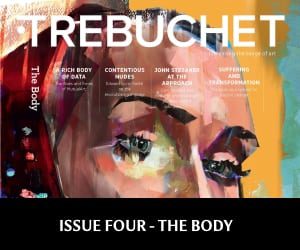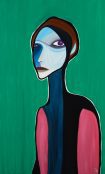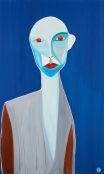[dropcap style=”font-size:100px; color:#992211;”]W[/dropcap]e are all ready to win, projecting villains and obstacles onto the situations and people who appear to be in our way, but as always, the enemy is within.
Our bodies suffer in space and time: we share this with other people. Our bodily pain has a direct equivalence in our minds; mental suffering has physical manifestations; physical suffering alters and affects our minds. But if we externalise our struggle we can never be responsible for our actions, own our bodies or change our minds.
Physical and mental suffering: mutilation, searing pain and trauma can be given context and even made to work for our best interests; we have a long history of bloody myths and fairy tales and a modern history of updating these in the premier medium of time, film. No matter how great the external impact on the body, so long as we survive it’s the mind that suffers and the mind that remains malleable to change and redemption, if we can face the true obstacles those we give force to with our own mental activity.
Jung and the Key to Self-Knowledge
Using Jungian concepts, it is possible to discern how the myths and fairy tales of a culture have developed to mediate powerful emotions, drives and primordial images erupting from individuals. Jung names the psychic forces which are responsible for this ‘Archetypes’:
“Archetypes are typical forms of apprehension, indeed wherever we meet with uniformity and regular recurring ways of apprehension, they are referable as archetypes.” (Jung, 1969)
The Archetypes for Jung are present in the ‘collective unconscious’ defining that space, which is like the psychic equivalent of DNA. Present in the collective unconscious are the ancient hopes, aspirations, fears, desires, drives and notions of the sublime which come to define a culture/epoch through there repeated insistence via individual’s psychic workings. In their essentialised form, the Archetypes being so potent can only be approached and made sense of indirectly through symbols, through a translation into meaning via creation myths, stories, art and so on and being the source of psychic energy, they are inexhaustible. “Not for a moment dare we succumb to the illusion that an archetype can be finally explained and disposed of. Even the best attempts at explanation are only more or less successful translations into another metaphorical language. (Indeed language itself is only an image.) The most we can do is to dream the myth onwards and give it a modern dress. And whatever explanation or interpretation does to it, we do to our own souls as well with corresponding results for our own well being. The Archetype – let us never forget this – is a psychic organ present in us all.” (Jung, 1969)
Dr Jolande Jacobi gives the following explanation of this in her book The Psychology of CG Jung (1942) using the example of an ‘axial system’. Jacobi explains:
“Thus, the archetype as a potential ‘axial system’ (the archetype per se) is pre-existent and immanent in the psyche. The ‘mother liquid’ – the experience of humanity – in which the precipitate must form represents the images which crystallise around the axial system and which take on increasing sharpness and richness of content in the womb of the unconscious.” (Jolande, 1942)
In this way we might understand Jung’s account of Archetype as a kind of river bed carved in the land: “An archetype is like an old watercourse along which the water of life has flowed for centuries digging a deep channel for itself.” (Jung, 1969)
And man, as Heraclitus said, is a river.
Read this article in full in Trebuchet 4 – The Body

Michael Eden is an artist and researcher working in London and the south east, his artistic practice is concentrated on painting and he divides his time between this and lecturing in art history and contextual studies.






















